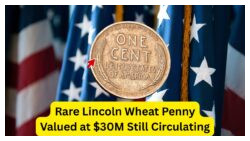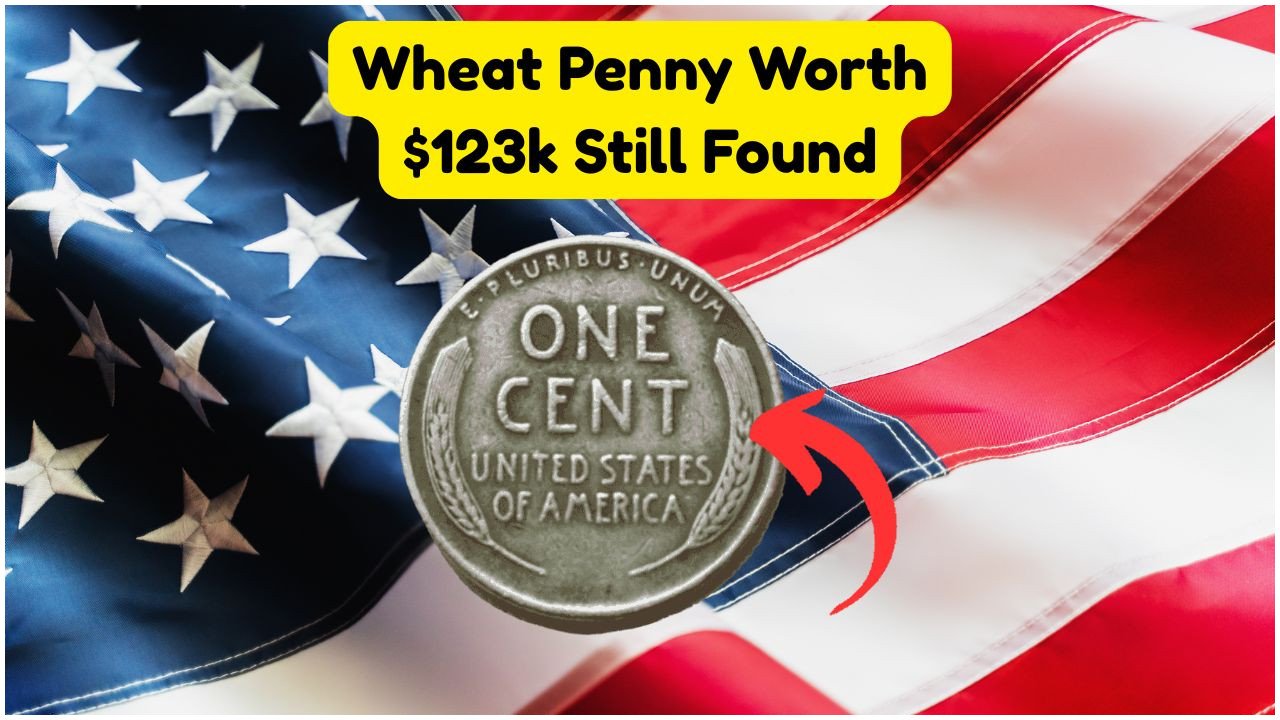Lincoln Wheat Penny
Table of Contents
Discovering the $123k Lincoln Wheat Penny
Could you unknowingly have a $123,000 treasure in your pocket? The Lincoln Wheat Penny, a seemingly ordinary coin, has captivated collectors and enthusiasts alike with its storied history and astonishing value. The allure of finding such a rare piece still in circulation adds a thrilling dimension to numismatics. The Lincoln Wheat Penny, minted from 1909 to 1958, is not just any coin; it is a significant part of American history. Its design, featuring the iconic profile of President Abraham Lincoln, was the first to depict an actual person on U.S. currency. While millions were produced, a few distinct variants have become highly sought after by collectors. One such variant, minted in 1943 from bronze rather than the typical steel due to a wartime error, has fetched prices upwards of $123,000 at auctions.
- The Fascination with Lincoln Wheat Pennies: These coins are cherished not just for their monetary value but also for their historical significance and aesthetic appeal.
- Rare Variants: Some years and mint marks, like the 1909-S V.D.B. and 1914-D, are particularly prized.
- The 1943 Error: Due to a wartime switch to zinc-coated steel, a few bronze 1943 pennies were accidentally minted.
- Unexpected Finds: Collectors and casual discoverers alike have stumbled upon these rarities in change.
- Value Fluctuations: The market value for these coins can vary significantly based on condition and rarity.
- Preserving History: Owning a Lincoln Wheat Penny is like holding a piece of American history in your hand.
- Investment Potential: These coins can be a lucrative investment, with values appreciating over time.
Identifying Your $123k Lincoln Wheat Penny
Finding a Lincoln Wheat Penny worth $123,000 requires a keen eye and a bit of luck. Knowing what to look for is crucial, as subtle variations can make all the difference. The most valuable Lincoln Wheat Pennies are often those with errors or unique mint marks. For instance, the 1943 bronze penny is distinguishable by its lack of the zinc coating that gives other 1943 pennies a silvery appearance. Collectors should also be aware of the condition, or grade, of the coin, as this can significantly impact value. Coins with clear details and minimal wear are typically worth more. Utilizing magnification and reference guides can aid in identifying key features and assessing a coin’s potential worth.
- Check the Date and Mint Mark: Rare years and mint marks include 1909-S V.D.B., 1914-D, and 1943 bronze.
- Inspect for Errors: Look for unusual features or anomalies that could indicate a rare variant.
- Assess Condition: Coins in better condition are more valuable; look for clear details and minimal wear.
- Use Reference Guides: Consult numismatic resources to verify and compare findings.
- Seek Professional Appraisal: For high-value finds, a professional assessment can confirm authenticity and value.
The History and Value of Lincoln Wheat Pennies
The story of the Lincoln Wheat Penny is one of cultural and historical significance, intertwined with moments of economic and social change. Introduced in 1909 to commemorate the centennial of Abraham Lincoln’s birth, the penny marked a departure from traditional designs, ushering in a new era of American coinage. Its reverse, featuring two wheat ears, symbolized prosperity and growth. Over the decades, the penny has witnessed transitions in metal composition and design, reflecting the nation’s evolving priorities and challenges. Today, the Lincoln Wheat Penny endures as a beloved collector’s item, with certain editions reaching staggering prices at auctions.

Discover the $11.1 Million Lincoln Wheat Penny Still in Circulation
- Iconic Design: The Lincoln Wheat Penny was the first U.S. coin to feature a real person’s image, setting a new precedent.
- Composition Changes: World War II prompted a temporary switch to steel, resulting in the rare 1943 bronze error.
- Collector’s Appeal: Despite being out of production, these pennies remain popular among collectors for their historical and aesthetic value.
- Record Sales: Some rare variants have sold for six figures, highlighting their investment potential.
- Enduring Legacy: The penny remains a testament to American history and craftsmanship.
Understanding Coin Grading and Value
| Grade | Description | Potential Value | Rarity | Examples | Demand | Market Trends | Investment Potential |
|---|---|---|---|---|---|---|---|
| Mint State | No wear, sharp details | Very High | Rare | 1914-D, 1922 Plain | High | Increasing | Excellent |
| Extremely Fine | Slight wear, clear details | High | Uncommon | 1909-S V.D.B. | Moderate | Stable | Good |
| Very Fine | Moderate wear, visible details | Moderate | Common | 1931-S | Moderate | Stable | Average |
| Fine | Heavy wear, some detail | Low | Common | 1944 Steel | Low | Decreasing | Poor |
| Good | Extensive wear, minimal detail | Very Low | Very Common | 1955 DDO | Low | Decreasing | Poor |
| About Good | Almost smooth | Minimal | Very Common | Any common year | Very Low | Stable | Negligible |
| Uncirculated | No wear, mint luster | Extremely High | Very Rare | 1943 Bronze | Very High | Increasing | Excellent |
Engaging with the Numismatic Community
For enthusiasts and hopeful collectors, engaging with the numismatic community can be both enlightening and rewarding. Participating in coin shows, joining collector clubs, and engaging in online forums are excellent ways to deepen one’s understanding and appreciation of coins like the Lincoln Wheat Penny. These platforms offer opportunities to learn from seasoned collectors, access exclusive resources, and share personal discoveries. Many collectors find value in attending live auctions, where they can witness firsthand the excitement and competitiveness surrounding rare coins. Networking with fellow enthusiasts can also provide insights into market trends and investment strategies, making it invaluable for both novice and seasoned collectors.
- Attend Coin Shows: Meet with collectors and dealers to exchange knowledge and find rare coins.
- Join Collector Clubs: Become part of a community that shares a passion for numismatics.
- Participate in Online Forums: Discuss and learn about coins with enthusiasts worldwide.
- Attend Auctions: Experience the thrill of bidding on rare coins and observing market dynamics.
- Network with Collectors: Share experiences and gain insights into collecting and investing.
Exploring the World of Coin Collecting
Coin collecting, or numismatics, is a hobby that transcends simple accumulation to become a fascinating exploration of history, art, and culture. Collectors are often drawn to coins for their intricate designs, historical significance, and the stories they carry. Each coin is a miniature piece of art, reflecting the era in which it was produced and the values of the society that minted it. For those interested in beginning their collection, starting with widely available coins like the Lincoln Wheat Penny can be a rewarding endeavor. As collectors gain experience, they may seek out rarer and more valuable pieces, guided by their interests and budget.
| Type | Period | Notable Features | Rarity | Value |
|---|---|---|---|---|
| Lincoln Wheat Penny | 1909-1958 | Wheat ears, Lincoln profile | Varies | Low to High |
| Buffalo Nickel | 1913-1938 | American buffalo, Native American profile | Moderate | Moderate |
| Mercury Dime | 1916-1945 | Liberty in winged cap | Common | Low to Moderate |
| Standing Liberty Quarter | 1916-1930 | Liberty standing | Moderate | Moderate |
Preserving Your Coin Collection
Preserving the quality and condition of your coin collection is paramount to maintaining its value and appeal. Proper storage and handling techniques can prevent damage and deterioration over time. Coins should be stored in a cool, dry environment, away from direct sunlight and moisture, which can cause tarnishing or corrosion. Using acid-free holders or albums can protect coins from environmental pollutants and physical damage. When handling coins, it is advisable to wear cotton gloves to prevent oils and dirt from transferring onto the surface. Regularly inspecting and cleaning coins, using non-abrasive methods, can help in preserving their luster and detail.
- Store in a Controlled Environment: Keep coins away from humidity and temperature fluctuations.
- Use Protective Holders: Acid-free holders and albums prevent physical and environmental damage.
- Wear Gloves: Protect coins from oils and dirt by wearing cotton gloves during handling.
- Avoid Cleaning with Abrasives: Use gentle methods to clean coins, preserving their natural patina.
- Regularly Inspect Your Collection: Check for signs of wear or damage and address them promptly.
FAQs on the $123k Lincoln Wheat Penny

Could You Have a Lincoln Wheat Penny Worth $30 Million in Your Pocket?
- What makes the 1943 Lincoln Wheat Penny so valuable? The 1943 bronze penny is valuable due to its rarity; only a few were minted by mistake during a steel coin production year.
- How can I tell if my Lincoln Wheat Penny is rare? Check for rare dates, mint marks, and errors. Consulting a reputable numismatic guide can provide more details.
- What should I do if I find a potentially rare penny? Have it authenticated and appraised by a professional to determine its true value.
- Why are some Lincoln Wheat Pennies worth more than others? Value is influenced by rarity, condition, and historical significance. Coins in better condition with unique features are typically more valuable.
- Where can I sell my rare Lincoln Wheat Penny? Consider auctions, coin dealers, or numismatic forums to connect with potential buyers.
Coin Collecting: A Journey Through History
The Lincoln Wheat Penny represents more than just monetary value; it is a gateway into the rich tapestry of numismatic history.
Whether you’re a seasoned collector or new to the hobby, the thrill of potentially discovering a $123,000 coin is unmatched.
As you delve deeper into the world of coin collecting, each discovery, each coin, tells a story of its own, enriching the experience.
The Lincoln Wheat Penny is not just a coin but a piece of history that continues to captivate collectors worldwide.
Embrace the journey, and who knows? You might just find that elusive treasure hiding in plain sight.
Happy collecting!
Explore more about coins and their hidden stories, and join the numismatic community today!
Disclaimer: This article is written for general informational purposes only. Please get the latest and accurate information from the official website.



